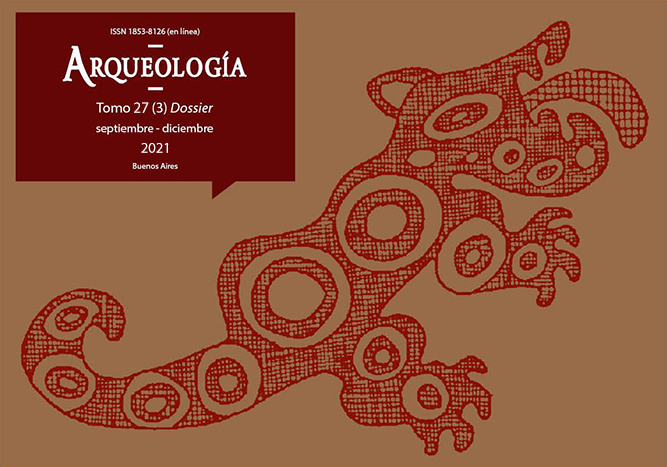Initial comments
Abstract
El tema de conservación y administración de sitios arqueológicos y, en particular, del arte rupestre ha sido tratado en Latinoamérica desde los años 1990 (ver Strecker y Taboada, 1995); sin embargo, es un desafío permanente que requiere esfuerzos considerables y la coordinación a nivel regional con los principales actores y responsables. A pesar de la cantidad de aportes y publicaciones existentes en numerosos países, a nivel internacional, pensamos que el tema debe ser reflexionado en forma crítica para aunar nuevos proyectos y programas que apunten a la conservación preventiva incluyendo campañas educativas, medidas de conservación y protección de los sitios.Downloads
References
De Guichen, G. (2014). Programa de Investigación para la Conservación Preventiva y Régimen de Acceso de la Cueva de Altamira (2012-2014). Altamira: Ministerio de Educación, Cultura y Deporte, Dirección General de Bellas Artes y Bienes Culturales y de Archivos y Bibliotecas.
Rolandi, D., Podestá, M. M., Falchi, M. P., Lagos Marmol, T. y Rolón, G. (2009). Los Colorados: un lugar para descubrir. Buenos Aires: Amigos del Instituto Nacional de Antropología.
Leung, Y., Spenceley, A., Hvenegaard, G. y Buckley, R. (Eds.) (2019). Gestión del turismo y de los visitantes en áreas protegidas. Directrices para la sostenibilidad. Gland: Serie Directrices sobre Buenas Prácticas en Áreas Protegidas, 27. Unión Internacional para la Conservación de la Naturaleza (UICN).
Osterwalder, A. y Pigneur, Y. (2010). Generación de modelos de negocios. Barcelona: Grupo Planeta.
Strecker, M. y Taboada, F. (Eds.) (1995). Administración y Conservación de Sitios de Arte Rupestre. Contribuciones al Estudio del Arte Rupestre. La Paz: SIARB.
Copyright (c) 2021 Matthias Strecker, Freddy Taboada

This work is licensed under a Creative Commons Attribution-NonCommercial-ShareAlike 4.0 International License.
Authors who publish in this journal agree to the following conditions:
- Authors retain copyright and yield to the journal right of first publication with the work registered with attribution license Creative Commons, which allows third parties to use the published always mentioning the authorship of the work and first publication in this magazine.
- Authors can make other independent and additional contractual arrangements for the non-exclusive distribution of the version of the article published in this issue (p. Eg., Inclusion in an institutional repository or publish it in a book), provided that clearly indicate that the work was published for the first time in this magazine.
- It allows and encourages the author / s to publish their work online (eg institutional or personal pages) before and during the process of revision and publication, as it can lead to productive exchanges and greater and more rapid dissemination of work published (See The Effect of Open Access).





(1)13.png)






1.jpg)
1.jpg)


13.png)
1.png)


(1)1.png)









